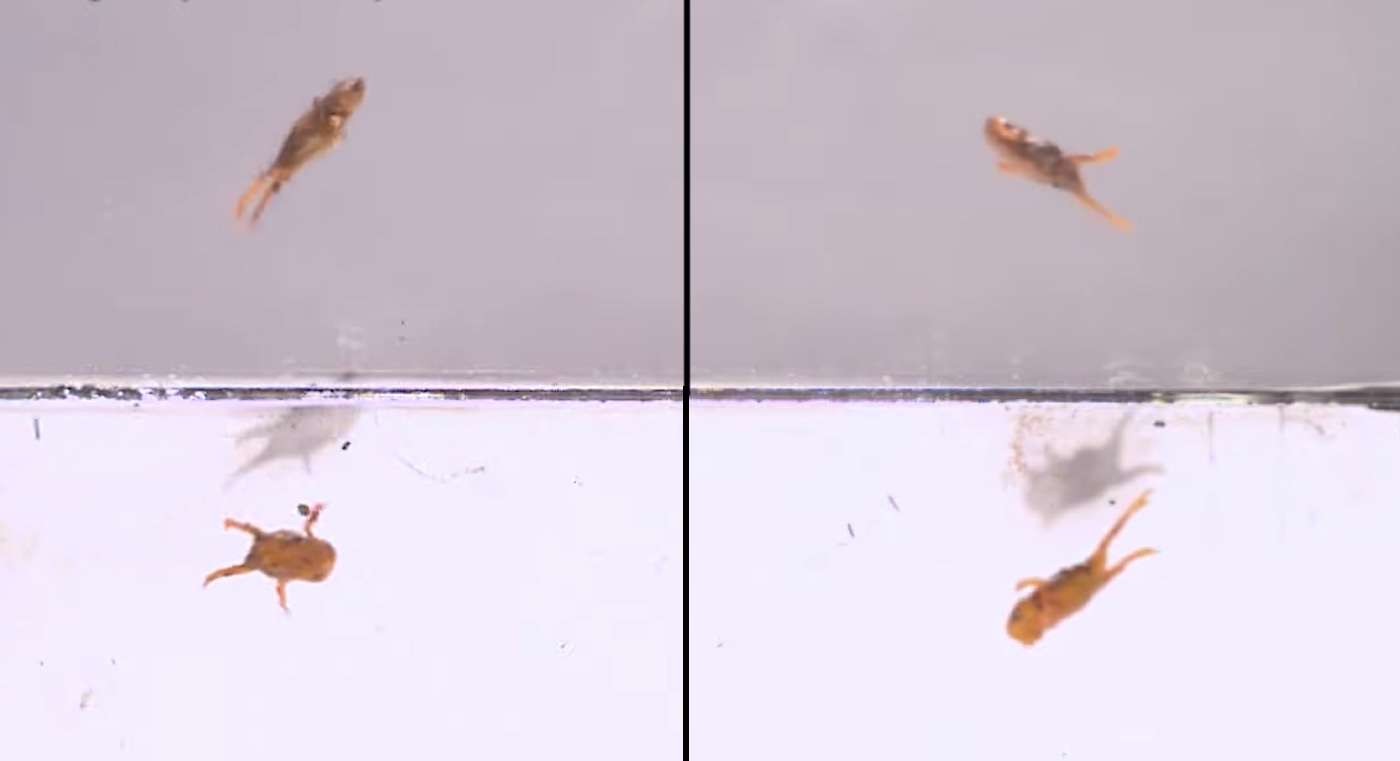Tiny Yorkshire Terrier Detects Breast Cancer in Woman, Jumping Up and Down on Her Chest in Alarm
A Yorkshire terrier saved Karena Kirk-Drain's life after jumping up and down on her chest to alert her to a cancerous lump.

We think of frogs and toads as hopping machines—but in reality they have to be landing machines as well to control the force they generate in their jumps.
However, a group of high-altitude dwelling Brazilian toads no bigger than a pencil point exhibit the strangest behavior, which biologist Richard Essner has extensively documented.
Pumpkin toadlets (Brachycephalus) can jump, but when it comes to landing, they go limp, spin out of control, and usually land on their tiny toad tushies.
Essner has pinned down this remarkable incompetence to the inner semicircular ear canal—a vital organ for coordination. Pumpkin toadlets have the smallest semicircular ear canal related to body size of any adult vertebrate, which Essner discovered by subjecting 100 of these toadlets to tiny CT scans.
"The inner ear, the semicircular canals in particular, are used to detect angular acceleration, which is key information for the frogs as they prepare for landing," Essner told CBC News. "And we believe they're not sufficiently sensitive to make use of that information because their semicircular canals have gotten so small."
Evolution works in mysterious ways. Being small has great benefits—many predators will just pass you by, and for a jumping animal like a toadlet, it essentially grants them immunity to bodily harm from falling, whether down from a leaf or the top of a mountain.
However in the case of Brachycephalus, it may have shrunk their ears a few too many sizes. This might make one imagine that pumpkin toadlets are essentially sitting ducks waiting for anything to devour them, since their jumping escape is limited to a single maneuver, but they're super poisonous, and their bright colors dissuade predators from targeting them.
CBC news talked with other frog experts, who suggested that their tiny hind legs, or the fewer toes present on their feet, could also explain the difficulty landing, but it would be difficult to pin their strange airborne limb-limpness on.
At the end of the day, both scientists are curious if other miniaturized animals have similar mobility problems.
(WATCH the video for this story below.)
HOP, Skip, and Jump This Science Story Over to Chums…
Be the first to comment